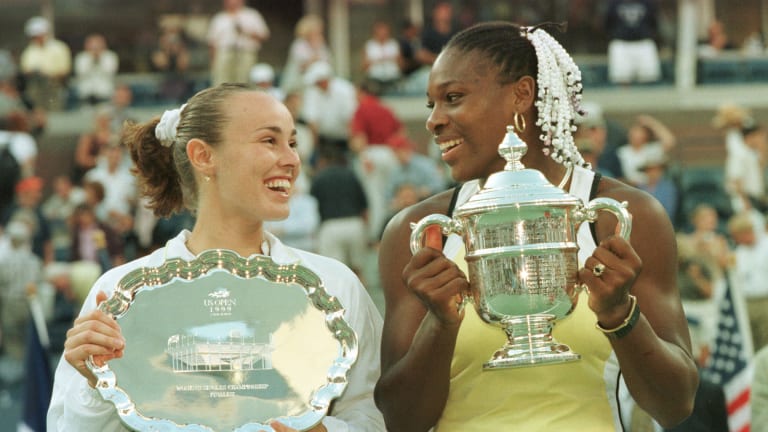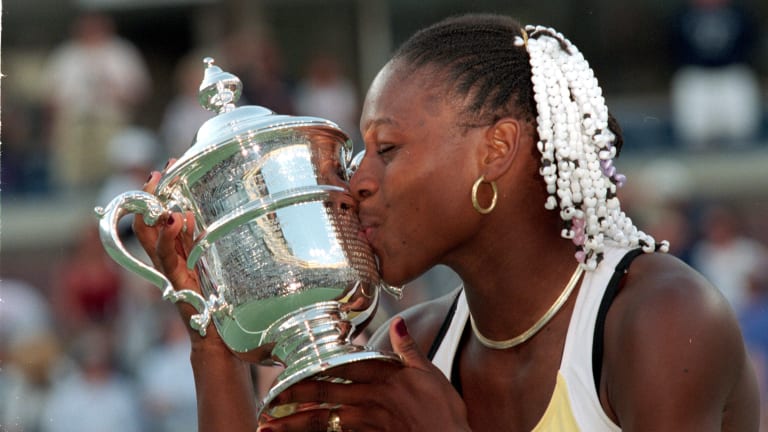After all, it was what father Richard had predicted before the event began; all that stood between dream and reality was Hingis—who, with her 1997 US Open final win over Venus and five major titles by the age of 18, was the cool, European contrast to the Williamses’ all-American fire. Barbs about big mouths and formal education were exchanged before an unsteady peace was arranged between Richard and Hingis—sealed with a t-shirt—but Hingis hoped for the last word when she survived Venus in the second semifinal, twice rallying from a break down in the decider.
And so, the all-teen final was set, but instead of the predicted family affair, Serena was up against her ultimate rival, and promptly got to work hitting through Hingis’ many defenses. Far from the pristine powerhouse she would soon become, watching Williams in 1999 is no less wondrous: her exuberant return winners, her ability to crack a backhand down the line on one leg, beaded hair flying. Before she was a legend, she was already legendary.
“There comes a time where you just have to stop caving,” she said after the match. “You have to stop. I encourage all you guys to stop! You get tired. You just get so tired of having to just go down because of one simple problem. In the end, I told myself, ‘You're going to have to perform. Even if you win or lose, you're still going to be out here and you're going to have to perform.’ That's what I did.”
A game from victory at a set and 5-3, Williams indeed refused to cave despite a youthful wobble. She saved a set point and surged through the ensuing tiebreak, forcing a final error from the Swiss Miss to claim her first US Open crown, 6-3, 7-6 (4).

